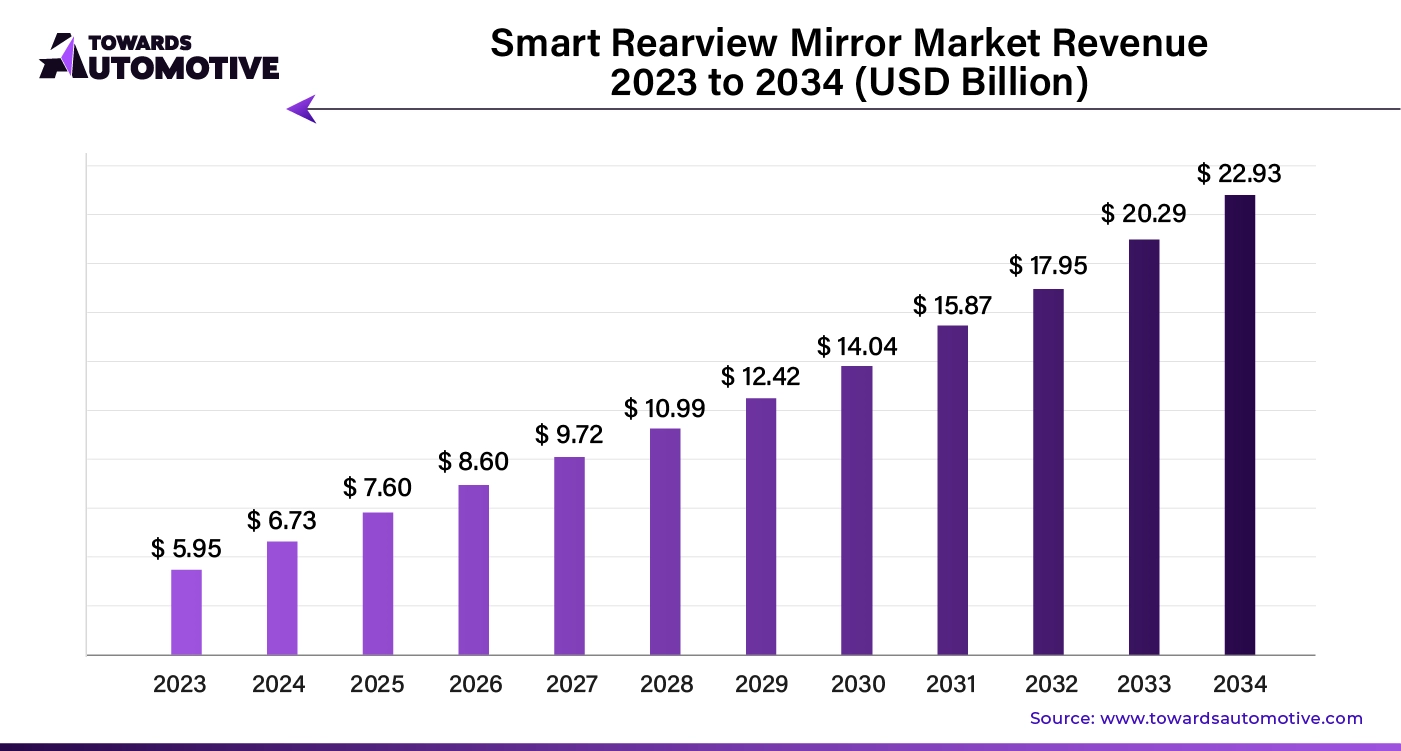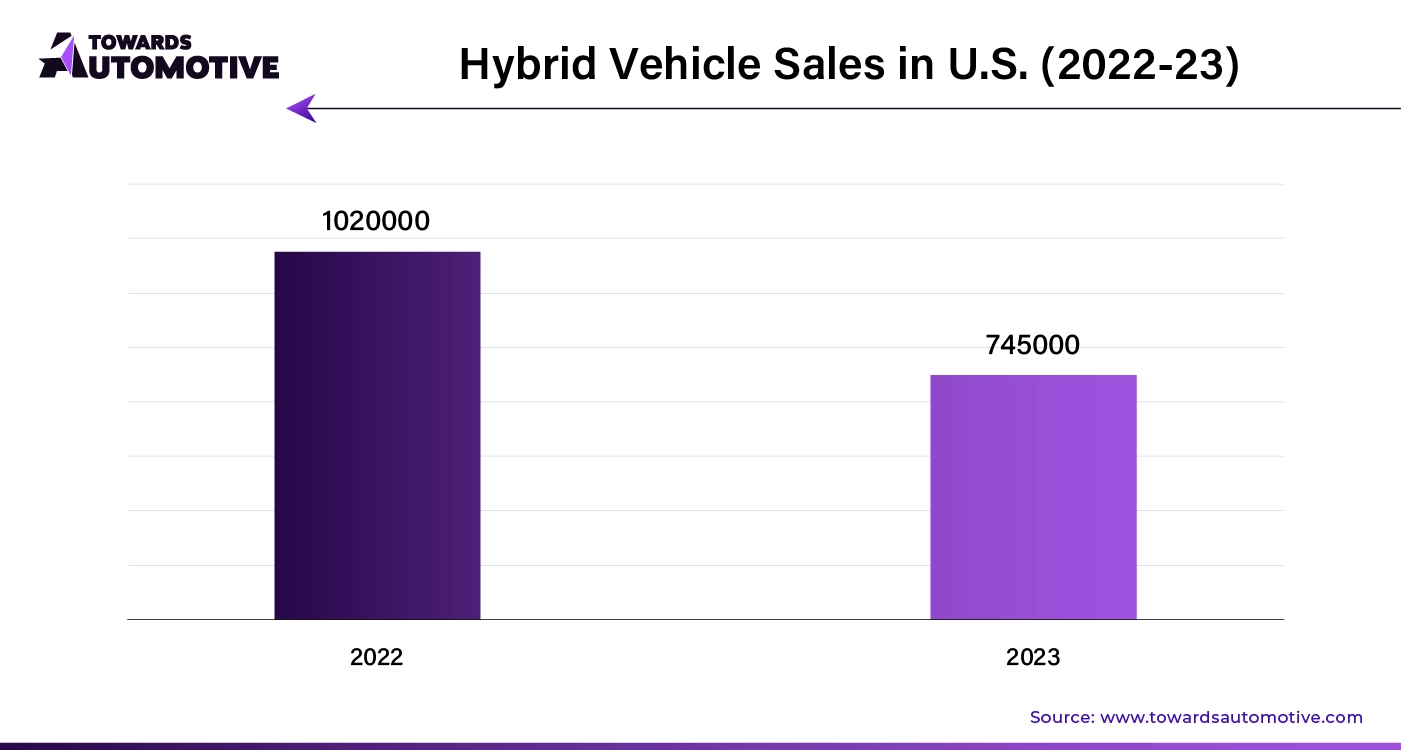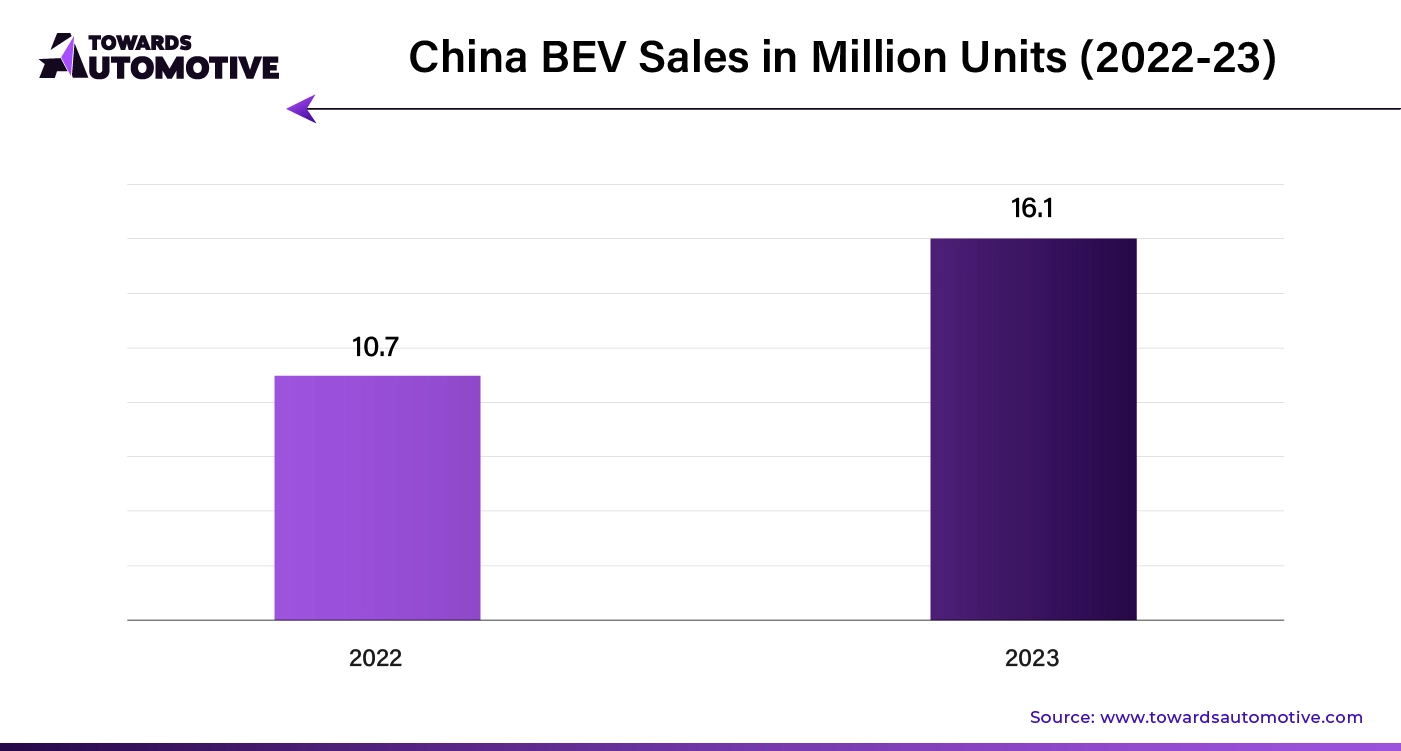March 2025

Senior Research Analyst

Reviewed By
The global smart rearview mirror market size is calculated at USD 6.73 billion in 2024 and is expected to be worth USD 22.93 billion by 2034, expanding at a CAGR of 13.05% from 2024 to 2034.

The smart rearview mirror market is gaining traction as advanced technologies continue to transform vehicle safety, convenience, and driver experience. Smart rearview mirrors integrate features such as cameras, sensors, and digital displays, replacing traditional mirrors to provide drivers with enhanced visibility and real-time information. These mirrors offer wider fields of view and eliminate blind spots, addressing key safety concerns by allowing drivers to monitor traffic and surroundings more effectively. One of the key drivers of growth in this market is the increasing demand for advanced driver assistance systems (ADAS), as smart rearview mirrors complement technologies like lane departure warning, collision avoidance, and parking assistance.
Moreover, as automotive manufacturers continue to prioritize safety and driver convenience, the adoption of smart rearview mirrors is rising across both passenger and commercial vehicles. The mirrors' ability to provide clearer, real-time images—particularly in low light, adverse weather, or during night driving—enhances safety, which is appealing to consumers and fleet operators alike. Additionally, technological advancements in camera systems and display technologies are making smart rearview mirrors more affordable and accessible to a wider range of vehicle segments, further driving market growth.
Regulations promoting vehicle safety and the increasing integration of smart technologies into cars also boost the demand for these mirrors. In regions like North America, Europe, and parts of Asia Pacific, governments and regulatory bodies are pushing for greater adoption of safety features, which includes the implementation of smart rearview mirrors. With the automotive industry’s ongoing shift toward connected, autonomous, and electric vehicles, smart rearview mirrors are poised to become standard equipment, accelerating the growth of this market in the coming years.
AI plays a crucial role in transforming the smart rearview mirror market by enhancing its functionality, safety features, and driver assistance capabilities. With AI integration, smart rearview mirrors go beyond simply providing a clearer view of the road—they become intelligent systems capable of analyzing real-time data and offering actionable insights to drivers. One key application of AI in smart rearview mirrors is object recognition and tracking. AI-powered cameras and sensors can identify vehicles, pedestrians, and other obstacles, providing drivers with alerts about potential hazards, such as lane departure warnings or collision risks.
AI also enables the integration of advanced driver assistance systems (ADAS) within smart rearview mirrors. These systems leverage AI to monitor driver behavior, detect signs of drowsiness or distraction, and issue alerts, promoting safer driving practices. Additionally, AI enhances the image processing capabilities of smart rearview mirrors by optimizing visibility in challenging conditions like low light, heavy rain, or fog, ensuring that drivers have clear, real-time views of their surroundings.
Moreover, AI algorithms can continuously learn and improve over time, personalizing the mirror's performance based on the driver’s habits and preferences. As the automotive industry moves towards autonomous driving, AI will play an even more significant role by integrating with vehicle sensors and other ADAS technologies to provide drivers with a comprehensive, intelligent safety system. These advancements make AI a key driver of innovation and market growth in the smart rearview mirror segment.
The rising sales of hybrid vehicles are significantly driving the growth of the smart rearview mirror market. As automakers increasingly focus on producing fuel-efficient and eco-friendly vehicles, hybrid vehicles have gained considerable traction among consumers globally. These vehicles are often equipped with advanced technologies to enhance the driving experience, making smart rearview mirrors a natural addition. The integration of smart mirrors complements the technological profile of hybrid vehicles, offering improved safety, convenience, and advanced driver assistance systems (ADAS) features that appeal to environmentally conscious and tech-savvy buyers.
Hybrid vehicle manufacturers are prioritizing safety and efficiency, and smart rearview mirrors play a crucial role in achieving these goals. By providing drivers with enhanced rear visibility, blind-spot detection, and backup camera integration, these mirrors help reduce the risk of accidents and improve overall driving safety. Additionally, smart mirrors support energy-efficient driving by minimizing distractions and ensuring smooth navigation, aligning with the core philosophy of hybrid vehicles to provide both environmental benefits and optimal performance.
As hybrid vehicles are often marketed as technologically advanced, smart rearview mirrors help manufacturers differentiate their offerings in an increasingly competitive market. These mirrors are becoming standard features in many hybrid models, further driving consumer demand and adoption. The shift toward hybrid vehicles also aligns with global environmental regulations, where safety technologies such as smart rearview mirrors are encouraged or mandated to enhance the overall safety profile of vehicles.
Moreover, hybrid vehicles are popular among early adopters of cutting-edge automotive technologies, and the integration of smart rearview mirrors appeals to this consumer base. As the hybrid vehicle market continues to expand, driven by consumer demand for fuel efficiency and lower emissions, the adoption of smart rearview mirrors will follow, propelling significant growth in the market.

The smart rearview mirror market faces several restraints, including high initial costs and the complexity of integration into vehicles. Advanced features such as cameras, sensors, and displays make these mirrors more expensive than traditional options, which may limit adoption, particularly in budget or mid-range vehicle segments. Additionally, the complexity of incorporating smart rearview mirrors into existing vehicle systems can pose technical challenges for automakers. Limited consumer awareness and skepticism regarding new technologies, especially in emerging markets, can also hinder market growth. Furthermore, potential cybersecurity risks related to connected systems may raise concerns among users, affecting widespread adoption.
The integration of 360-degree surround cameras into smart rearview mirrors is creating significant opportunities in the smart rearview mirror market. These cameras provide drivers with a complete, real-time view of their vehicle's surroundings, greatly enhancing safety and convenience. By eliminating blind spots and offering a bird’s-eye view, 360-degree cameras make parking, reversing, and maneuvering in tight spaces much easier and safer. This feature is especially valuable in urban environments and congested areas where precise vehicle control is critical.
The growing demand for advanced safety features in vehicles is driving the adoption of smart rearview mirrors equipped with 360-degree cameras. Consumers and fleet operators increasingly prefer vehicles with comprehensive safety solutions, which has spurred automakers to incorporate these advanced mirrors into a wider range of models. Additionally, regulatory bodies are pushing for enhanced safety measures in vehicles, making the inclusion of surround cameras an attractive feature for manufacturers to comply with evolving safety standards.
Moreover, 360-degree surround cameras also cater to the rising demand for autonomous and semi-autonomous driving technologies, where situational awareness is crucial. These cameras help provide a seamless integration with advanced driver assistance systems (ADAS), positioning them as a key innovation that opens new growth avenues for the smart rearview mirror market.
The integrated backup camera display segment led the industry. The integration of backup camera displays into smart rearview mirrors is a significant factor driving the growth of the smart rearview mirror market. As vehicle safety standards continue to evolve, backup cameras are increasingly becoming mandatory or highly recommended in many regions. These cameras provide drivers with a real-time view of the area behind their vehicles, enhancing visibility and reducing the risks of collisions during parking or reversing. Integrating this functionality directly into rearview mirrors offers drivers a seamless and intuitive experience, combining traditional mirror functionality with modern safety technologies in a single, easy-to-use system.
This feature is especially valuable in urban environments where tight parking spaces and heavy traffic make maneuvering more challenging. The integrated display provides a wider field of vision compared to traditional rearview mirrors, effectively eliminating blind spots and giving drivers a clear view of obstacles or pedestrians that might not be visible otherwise. This enhanced visibility contributes to reduced accidents, making the feature highly attractive to safety-conscious consumers and commercial fleet operators.
Moreover, the rising consumer demand for convenience and safety is driving automakers to adopt smart rearview mirrors with integrated backup camera displays in a wider range of vehicle models, including mid-range and even entry-level cars. This feature is also aligned with the growing trend of advanced driver assistance systems (ADAS), making it a critical component in modern vehicles.
As automotive manufacturers increasingly focus on integrating advanced safety technologies to comply with regulatory standards and meet consumer expectations, the demand for smart rearview mirrors with backup camera displays is expected to continue growing, fueling the expansion of the market. This integration enhances both driver safety and convenience, making it a key growth driver in the smart rearview mirror market.
The OEM segment dominated the industry. Original Equipment Manufacturers (OEMs) play a pivotal role in driving the growth of the smart rearview mirror market by incorporating advanced safety and convenience features into vehicles, thereby meeting rising consumer expectations and regulatory requirements. As OEMs seek to differentiate their products in an increasingly competitive automotive landscape, smart rearview mirrors have emerged as a key value-added feature that enhances driver safety, convenience, and overall vehicle appeal. By integrating smart rearview mirrors with advanced functionalities such as backup camera displays, blind-spot monitoring, and real-time video feeds, OEMs are able to offer a more comprehensive and intuitive driving experience.
OEMs are increasingly embedding these mirrors in both high-end and mid-range vehicle models, widening the market scope. Traditionally limited to luxury vehicles, smart rearview mirrors are now being offered in more affordable models, thanks to advancements in technology and cost reduction efforts. This wider availability is driving mass adoption and making smart rearview mirrors a standard feature in many new vehicles, further fueling market growth.
Moreover, OEMs are aligning their product offerings with growing consumer demand for advanced driver assistance systems (ADAS) and enhanced safety features. As safety regulations around the world become more stringent, OEMs are incorporating technologies that enhance driver awareness and reduce the risk of accidents. Smart rearview mirrors, with integrated camera systems and AI-driven features, are becoming a critical component of these efforts, helping OEMs comply with safety standards while appealing to tech-savvy consumers.
In addition, OEM partnerships with technology providers are pushing the boundaries of innovation in the smart rearview mirror market. Collaborations on research and development are resulting in mirrors with more sophisticated features, such as AI-powered object recognition and improved night vision, positioning OEMs as key drivers of technological advancements in the sector.
Asia Pacific dominated the market in 2023. Rapid urbanization, supportive government regulations, and the growth of electric vehicles (EVs) are key drivers fueling the expansion of the smart rearview mirror market in Asia Pacific. With urbanization accelerating in countries such as China, India, and Southeast Asia, the demand for vehicles is rising in densely populated cities where advanced technologies that enhance safety and convenience are becoming essential. Smart rearview mirrors, which offer improved visibility, blind-spot elimination, and real-time monitoring, are increasingly being integrated into vehicles to cater to the needs of drivers navigating congested urban environments. This urban expansion is also prompting the demand for safer and more reliable vehicles, contributing to the market's growth.
Supportive government regulations and safety initiatives further drive the adoption of smart rearview mirrors in the region. Governments across Asia Pacific are introducing stringent vehicle safety regulations aimed at reducing road accidents and improving driver safety. These policies encourage automakers to adopt advanced technologies such as smart rearview mirrors, which offer enhanced visibility, assist with lane departure, and provide collision warnings. Additionally, governments are incentivizing the development and adoption of safety technologies, helping push the smart rearview mirror market forward.
The growth of electric vehicles (EVs) in Asia Pacific also plays a critical role in the market's expansion. As the region becomes a global leader in EV production and sales, the integration of advanced driver assistance systems (ADAS) in EVs is on the rise, and smart rearview mirrors are becoming essential components of these systems. EV manufacturers are incorporating smart mirrors to enhance safety and improve vehicle efficiency, which aligns with the broader push towards sustainable and intelligent vehicle technologies.

North America is observed to grow at the fastest rate in the smart rearview mirror market. Autonomous driving, the rising adoption of advanced driver assistance systems (ADAS), and growing demand for vehicle safety are key factors driving the growth of the smart rearview mirror market in North America. With the region at the forefront of autonomous vehicle development, smart rearview mirrors are playing a pivotal role in enhancing the safety and functionality of these vehicles. Equipped with AI-based cameras and sensors, smart rearview mirrors provide real-time monitoring of a vehicle’s surroundings, offering wider fields of view and helping autonomous systems make better decisions in navigating traffic and avoiding obstacles.
The increasing adoption of ADAS technologies across North America is another significant driver of this market. As consumers seek vehicles that offer enhanced safety features like lane departure warning, collision avoidance, and parking assistance, smart rearview mirrors serve as an essential component in enabling these systems. By integrating with ADAS, smart mirrors provide drivers with critical information, reduce blind spots, and improve situational awareness, making driving safer and more convenient.
Additionally, growing consumer awareness and demand for vehicle safety are propelling the adoption of smart rearview mirrors in both passenger and commercial vehicles. These mirrors offer improved visibility in low-light conditions, eliminate blind spots, and provide better rearward visibility than traditional mirrors, thus meeting the rising safety expectations of drivers. Regulatory bodies in North America, such as the National Highway Traffic Safety Administration (NHTSA), are also pushing for stricter vehicle safety standards, further encouraging the adoption of smart rearview mirrors.
By Features
By Technology
By Vehicle Type
By Sales Channel
By Region
March 2025
March 2025
February 2025
September 2024
Dr. Arjun Patel is a distinguished expert in the automotive industry, holding advanced degrees in Automotive Engineering and Mechanical Engineering. His expertise spans automotive market dynamics, technological advancements, and sustainable practices. Dr. Patel excels in conducting in depth research and analysis on market trends, consumer preferences, and the economic implications within the automotive sector. He is renowned for his insightful publications on topics such as electric vehicles, autonomous driving technologies, and the evolution of sustainable transportation solutions. Dr. Patels research contributions have significantly advanced understanding in the field, earning him recognition as a leading authority in automotive research and analysis.
We offer automotive expertise for market projections and customizable research, adaptable to diverse strategic approaches.
Contact Us